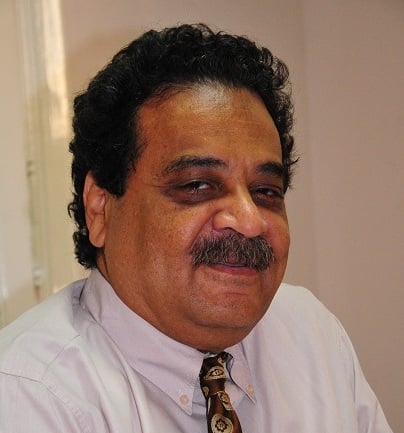
Power transition within the 1952 family occurs if the regime’s crisis reaches an impasse and “change” must take place to overthrow the president and the group or oligarchy surrounding him. This leads to new regime officials appointed and some policy alterations. Perhaps we recall that, at the peak of a crisis leading to a power transfer, we constantly hear demands for “change”, which seem to be a mere dream.
The question is now: what are the changes that occur following a transfer of power from one president to another within the 1952 family? Did the transfer of power merely break through the boredom and repugnance by overthrowing the president and the junta as though they were a sacrifice for the sake of reviving the family’s regime? Or did the power transfer, especially since it took place during a crisis, highlight the necessity of drastic changes to the regime’s policies, which they were unable to do for a significant period of time because they were deaf to everyone’s demands?
We notice that the new president is not a member of the old junta although some claim so; some claim that Mubarak was under El-Sadat’s influence, but his supporters will confirm he was cautious to draw a line between himself and El-Sadat. Although Mubarak was vice-president, he was only involved behind the scenes.
This distance between the president and the old junta, between El-Sadat, Mubarak, and Al-Sisi, released each new president from the crimes of the “bygone era”, especially from the perspectives of the social classes and political parties seeking justice and freedom. The president’s loyalty to the ruling class, whether it be El-Sadat, Mubarak, or Al-Sisi, ensure the constants of the regime do not change and everything remains the same despite the regime change and ‘radical’ outward rhetoric.
These constants comply with local, regional, and international changes through creating balances that do not impact them. The new president finds himself between a rock and a hard place: one party imposes pressure for the sake of reform, while the other wants a way out of the crisis that preserves its constants.
New presidents from the 1952 family did not reach the presidency through politics, nor did they work through a political party or enter into democratic elections. The president did not develop a specific vision, is not accustomed to thinking in a systematic manner, and did not develop dialoguing skills or political leadership.
Instead, he resembles a normal person who adopts the same principles the children of the former ruling class adopted. As for the heads of the 1952 family who did have a political background, their main background was still the military and/or state institutions.
This method for grooming a person does not help them formulate independent vision or thoughts. Now this man, although lacking political formation, suddenly finds himself president with absolute authority responsible for determining the state’s destination. The officials that surround him consider themselves a “secretary to Mr. President” as Mubarak-era National Democratic Party Secretary General Youssef Wali used to describe all senior officials under Mubarak.
The new president descends from military ranks; he is a president without a political background, whom many people look to in search of reform. He belongs to the ruling class, understands its ideas and aspirations, and is exposed both directly and indirectly to its pressures.
Following the former president’s ouster, it would be logical to think that from the first day he takes office, the new president would be required to utilise several tactics ranging from containment to confrontation.
El-Sadat suffered the most from his predecessor’s junta. When his rule began, Nasser remained popular, and his junta were in full control of the situation. El-Sadat initially tried to appeal to this junta as an obedient person capable of being contained in whatever he attempted.
Slowly, he tried to undertake some limited changes and at the right moment he managed to overthrow the junta in one swoop, which became known as the Correction Revolution. After this step, the road was open to allow El-Sadat to take positions and enact specific policies aimed at ending the regime’s crisis.
He simultaneously attempted to generate aspirations and hopes for reform, after improving Egypt’s economy following the failure of the first five-year plan. El-Sadat took more radical steps than Nasser by accepting the Rogers Plan to peacefully settle the conflict with Israel. His other efforts to solve the regime’s crisis entailed responding to various demands for political reform, and soon, the period became known as the restricted multi-party era.
When Mubarak began his rule, El-Sadat’s regime crisis had reached its peak and opposition figures to El-Sadat were in prison. Mubarak could release them and receive them in the presidential palace to fuel hopes of democratic reform and largely calm the situation.
El-Sadat was commissioned to undertake changes no one would dare to make which the ruling class saw as essential to surmount the crisis. In return, he was expected to bear complete responsibility and then step down for a new president who would start with a clean slate after the changes stabilised.
This new leader was to create a new situation for the land without dirtying his hands by the positions and practices that brought about the changes. These would bring shame to those who committed them, marking him the culprit in the unforgiving course of history.
The ruling class sacrificed Sadat and his junta in order for the class and its constants to remain, and we must not forget that Mubarak was keen to make himself seem ‘good’ in the minds of the people that gathered around.
For many years after, Mubarak reined in the Intifah, privatisation, and normalisation to satisfy public opinion, while maintaining ties with strong political forces highly respected by the masses.
Mubarak surrounded himself with figures like Youssef Idris and Philip Halab and made sure to consult leaders of political parties at frequent intervals by convening one conference on the economy and others surrounding national dialogue.
Now we must pose the difficult question: How does, or will, Al-Sisi confront Mubarak’s junta? What are the people’s hopes for Al-Sisi? And what are the steps that he must take in order to solve the crisis from the ruling class’ perspective?
Farid Zahran is a publisher and writer. He is the co-founder of the Egyptian Social Democratic Party




